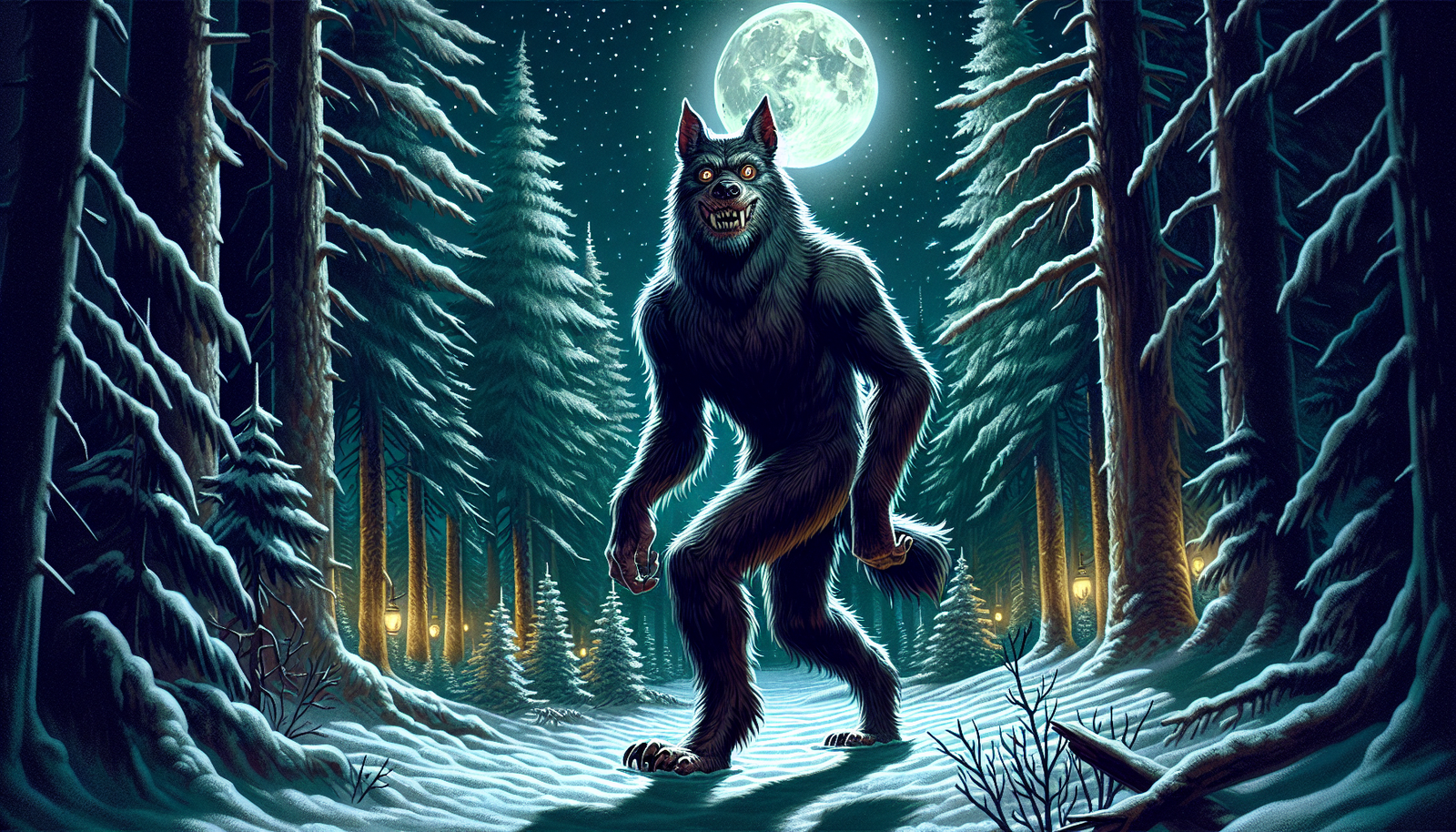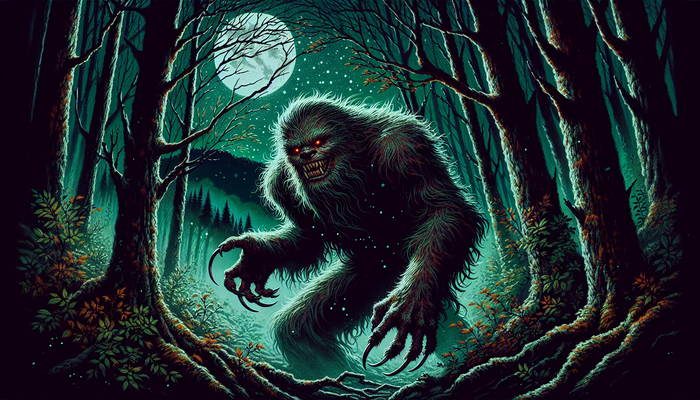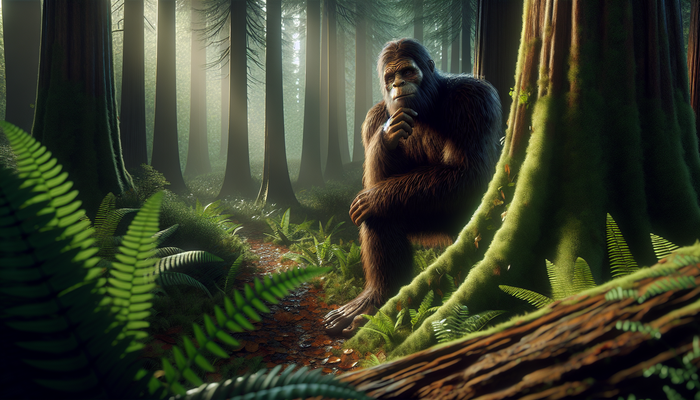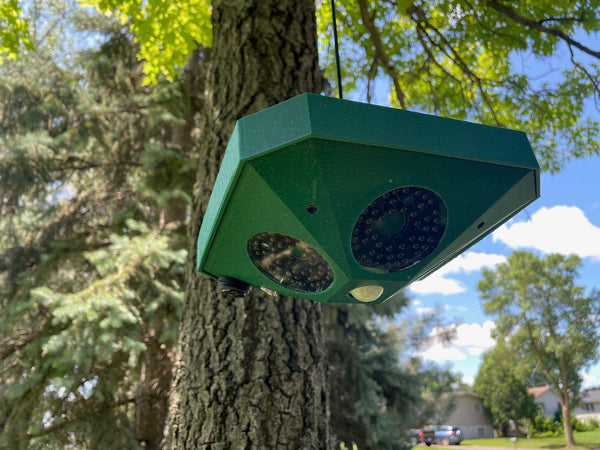Dogman Sightings Across America

Lucas Jennings, Cryptozoologist and Adventurous Naturalist
Introduction
As an adventurous naturalist with a passion for the unexplained, I've dedicated my life to seeking out creatures that lie beyond the bounds of current scientific knowledge. Of all the elusive beings I've pursued over the years, few have captured my imagination as profoundly as the enigmatic figure known as the Dogman. This bipedal entity with the body of a man and the head of a canine has become the stuff of legend, particularly in certain parts of the American Midwest. Despite decades of eyewitness accounts, however, the Dogman remains an unverified cryptid, sowing both intrigue and skepticism among enthusiasts and experts alike. In this article, I intend to delve deeply into the mystery of Dogman sightings, exploring their origins, the accounts of credible witnesses, and the implications these encounters hold for the field of cryptozoology. My goal is to provide the most comprehensive examination of this phenomenon in hopes of uncovering the truth behind this beast on two legs that has left so many awestruck and terrorized.
The Origins of the Dogman Legend
While tales of werewolves and other shapeshifters have existed for millennia across various cultures, documented sightings of the cryptid known as Dogman can be traced back to one seminal encounter in 1887. That year, two lumberjacks in Wexford County, Michigan reported seeing a creature with a man's body and a dog's head while working in the woods. This highly unusual account has come to be regarded as the first recorded Dogman sighting, sparking waves of similar reports throughout parts of the American Midwest.
Intriguingly, Native American legends from the region seem to reference creatures resembling the Dogman long before European settlement. Accounts from the Odawa tribes describe wolf-like beasts walking on two legs that stalked the areas near Lake Michigan. These stories suggest the possibility that the Dogman existed in the region well before that fateful lumberjack sighting in 1887. Some cryptozoologists have noted parallels between the Dogman and mythical figures like the ancient Egyptian god Anubis, who bore the head of a jackal, and the European legends of werewolves that date back to ancient Greece and Rome. Whether these connections reflect cultural diffusion or a shared human fascination with human-canine hybrids remains uncertain. Still, they indicate a long lineage of myths and folklore that may have laid the groundwork for the Dogman as we conceive of it today.
In recent decades, the Dogman has captured the imaginations of the general public in part due to its association with a particular pattern of sightings. According to local lore, the Michigan Dogman appears in a ten-year cycle, with waves of encounters reported in years ending in seven. Sightings seem to spike dramatically during these years, perhaps as the result of increased vigilance and expectation among the public. Skeptics argue this cycle is merely an artifact of collective delusion, but believers point to the consistent reports that closely follow this decade-spanning pattern. Whatever the underlying cause, the cyclical nature of these sightings has cemented the Dogman's status as a Michigan legend.
Eyewitness Encounters
Beyond the scattered historical accounts, a number of eyewitnesses have shared chilling firsthand encounters with the creature in contemporary times. Though descriptions vary from case to case, certain characteristics and behaviors recur frequently throughout these accounts. Standing between seven and eight feet tall, the Dogman is most often depicted as powerfully built, covered in dark fur, and possessing an eerily human-like gait despite its distinctly lupine head. Its eyes are said to glow amber or blue, and its howl strikes witnesses as a twisted mix of canine and human vocalizations. Reports consistently describe the Dogman as an alarming, almost supernatural presence exuding an aura of malevolence.
Two hotspots of Dogman activity have emerged over the years: the Michigan Dogman and the Beast of Bray Road in Wisconsin. The former has been spotted throughout Michigan's Lower Peninsula, with a heavy concentration of encounters in the northwest quadrant. Campers, hunters, and even drivers claim to have been confronted by this beast, left shaken to their core by its piercing gaze and hulking physique. The Beast of Bray Road haunts a rural stretch of road near Elkhorn, Wisconsin, where it has been glimpsed stalking prey and even approaching parked cars. These two Dogmen share uncanny similarities, stoking speculation that they may represent the same species inhabiting neighboring states.
Beyond these ongoing sightings, chilling historical accounts offer further glimpses into the nature of the Dogman. In 1938, a fisherman named Robert Fortney fended off an attack from a pack of wild dogs in Paris, Michigan. However, when he fired his rifle into the air, one of the beasts refused to flee, instead rising on its hind legs and staring him down menacingly. Such stories drive home the intimidating presence of this creature, seemingly unafraid of making itself known even in populated areas. These and countless other eyewitness reports paint a picture of a formidable predator that strikes visceral fear into those unfortunate enough to catch its attention.
The Cultural Impact of Dogman Sightings
The widespread fascination with the Dogman has seeped into regional pop culture and folklore. In 1987, disc jockey Steve Cook recorded the song "The Legend" chronicling the creature's history after being inundated with accounts from listeners. The song became an overnight sensation in Michigan, demonstrating the public's intense curiosity about the beast. Since then, the Dogman has inspired numerous books, TV shows, and horror movies cementing its status as a cultural phenomenon. Small towns like Elkhorn, Wisconsin have embraced their Dogman histories, weaving the legend into local identities. For many in these communities, the Dogman has transformed from a source of terror into a point of regional pride.
Of course, the tangible cultural footprint of the Dogman stems from the devotion and camaraderie of cryptozoology enthusiasts across the country. Online forums provide a gathering place for witnesses to share their stories and for experts to analyze patterns in sightings. Conferences, lectures, and expeditions focused on seeking out the Dogman offer chances for collaboration and community building. Despite the lack of scientific confirmation, the grassroots belief in the Dogman persists, drawing in new adherents with each passing year. This network serves as the lifeblood ensuring that the legend continues to evolve rather than fade into obscurity. For those who have seen the Dogman with their own eyes, the experience forever links them to others who know the shocking truth.
At the same time, the cryptozoological community faces an uphill battle in convincing mainstream science to take the possibility of the Dogman seriously. Without photographic proof or biological specimens, most zoologists dismiss the notion out of hand. Until tangible evidence surfaces, the Dogman likely will remain the province of amateur researchers and eyewitnesses. Still, the consistent stream of accounts demands explanation, even if current scientific paradigms cannot accommodate the existence of such a creature. The Dogman underscores the limitations of our knowledge of the natural world, serving as a humbling reminder that we have not yet lifted the veil on all of nature's mysteries.
Challenges in Cryptozoological Research
Validating the existence of any cryptid poses immense challenges, perhaps none more so than the Dogman. Devoid of a type specimen or other biological proof, cryptozoologists must rely entirely on eyewitness testimonies and circumstantial evidence that fails to meet the scientific standard of falsifiability. No amount of consistency across accounts can fully compensate for the lack of empirical data. Until the community can produce a carcass or capture a living specimen, the Dogman will remain confined to the realm of legend rather than zoological fact.
Of course, the cryptozoology community faces opposition even from within its own ranks. More skeptical researchers argue that without solid documentation, entertaining the possibility of the Dogman amounts to pseudoscience. They contend that eyewitness reports are notoriously unreliable, colored by hoaxes, misidentifications, and mass delusion. This reasonable skepticism serves as a check against the risk of confirmation bias, forcing advocates to back up claims with ever-more-rigorous evidence. Until believers can marshal truly compelling proof, the Dogman likely will continue to be excluded from scientific discourse.
For researchers like myself determined to pursue evidence of the Dogman's existence, we must balance this goal with ethical considerations. If real, the Dogman likely represents a rare or endangered species vulnerable to human encroachment. Our conduct in the field must be grounded in principles of conservation and stewardship, ensuring we do no harm in our quest for understanding. Moreover, part of the Dogman's range overlaps with Native American lands rich in indigenous history. Our investigative methods must respect tribal sovereignty and traditional beliefs about these creatures. The integrity of our conduct matters just as much as the fruits of our research. Without care and conscience guiding us, even definitive proof of the Dogman's reality could come at an unconscionable cost.
The Dogman in Cryptozoology
Among the pantheon of cryptids and legendary creatures, the Dogman occupies a unique position in the public imagination. Bigfoot has become ubiquitous as a pop culture icon, while the Loch Ness Monster and chupacabra attract waves of tourists and dedicated researchers. The Dogman, by contrast, remains obscure outside of its Midwestern haunts, lacking the widespread name recognition of its peers. Yet for those who have peered into its animalistic eyes, the Dogman often leaves the most visceral and life-altering impression. It provokes a singular, primal dread that drives home its otherness from known species.
The fundamental question, of course, is whether the Dogman has any basis in reality or exists solely as a product of folklore. Plenty of prosaic explanations have been offered for sightings, including misidentified bears, cases of mass hysteria, or people seeing what they want to believe. But the consistency across accounts gives reason for open-minded consideration. If the Dogman constitutes a genuine zoological discovery, it represents a relic of America's natural history that has somehow evaded formal identification. Perhaps a population of rare upright canines persists in seclusion, surfacing only sporadically to be glimpsed by chance witnesses. Admittedly, this notion strains credulity given the lack of supporting evidence. Nevertheless, to dismiss the possibility out of hand risks overlooking a find that could rewrite our biological texts. The only way forward is to keep investigating with an open, discerning mind.
Personal and Community Narratives
Beyond merely documenting sightings, I'm fascinated by the personal and communal impact left by encounters with the Dogman. On an individual level, coming face to face with the Dogman often represents a life-altering experience. Witnesses describe profound feelings of shock, awe, and dread upon seeing this beast, along with a lingering trauma that disrupts their very sense of reality. They emerge haunted both by memories of the creature's ferocity and the knowledge that the world is far stranger than they had conceived. These events become seared into witnesses' memories, resurfacing in dreams and quiet moments when the mind wanders.
At a wider community level, Dogman sightings have shaped regional identities and folklore. Within small rural towns, the creature shifts from an abstract legend to a real force touching residents' lives, a part of the social fabric. These communities foster a culture of the unexplained, where bizarre occurrences are acknowledged rather than dismissed. The Dogman becomes incorporated into local histories and cautionary tales passed between generations. For children raised on stories of the beast, its presence lingers at the edges of the imagination, glimpsed from the corner of the eye during nighttime walks through the woods. Even those spared firsthand encounters feel the weight of its existence within their communities.
The cryptozoology community, of course, represents the broadest network bound together by the mystery of the Dogman. Here, witnesses find a receptive audience, an understanding ear, and a shared sense of wonder. Expert researchers and weekend enthusiasts alike congregate around this collective unknown, swapping theories, dissecting sightings, and spurring each other on to uncover the truth. Regardless of the outcome, the bonds forged through this quest create meaning and fellowship. And for those who have seen the Dogman, they gain the reassurance that they are not alone in glimpsing something beyond explanation.
The Search for Evidence
Despite the challenges, efforts continue within the cryptozoology community to document and analyze physical proof of the Dogman. Researchers have compiled databases of sightings, hoping to identify patterns that might reveal the creature's habits and natural range. Teams have embarked on expeditions to areas with frequent encounters, armed with cameras and other recording equipment to capture the Dogman on film or video. So far, the results remain ambiguous, with no universally accepted documentation of the beast. However, each bit of circumstantial evidence expands the overall dataset, bringing researchers incrementally closer to a definitive finding.
Advances in technologies like remote trail cameras, night vision equipment, and DNA analysis offer new pathways for gathering evidence as well. Motion-activated cameras could potentially record a Dogman lured by bait, while night vision optics allow greater visibility in the creature's darkness-shrouded domain. Genetic testing may finally enable cryptozoologists to identify Dogman specimens against known species. Of course, implementing these technologies requires tremendous resources and luck. Nevertheless, they provide invaluable tools for those committed to revealing the Dogman's identity. At some point, the right investigator with the right technology may finally secure the evidence that cracks the case, but it will require great patience and perseverance.
For now, the reality of the Dogman remains suspended in uncertainty, an enigma awaiting resolution. The legend has already seeped deep into the cultural fabric of certain American regions, but I hold out hope that the creature itself can someday make the leap from folklore into zoology. There are still vast wildernesses left to explore, and perhaps in some secluded valley or hidden cave system, a population of these cryptids moves through the shadows, glimpsed only on rare occasions under the right conditions. I will continue assembling accounts, following leads, and refining my tracking methods, driven by the conviction that the Dogman is more than myth. In time, I believe the beast will inevitably step into the light.
Conclusion
Over 130 years since its first recorded sighting, the Dogman has secured its place as one of America's most captivating cryptozoological mysteries. While the creature's existence remains unproven and hotly debated, the consistency of eyewitness accounts demands that the subject be taken seriously. The Dogman forces us to acknowledge the limits of current scientific knowledge, leaving room for realms of possibility at the fringes of understanding. It serves as a symbolic reminder that our world still harbors secrets and surprises barely imaginable.
For adherents of cryptozoology, the Dogman represents a kind of quest, a pursuit that binds together a community through camaraderie and storytelling. Their impassioned search for truth drives home the human urge to explore and understand, to illuminate even the most remote corners of reality. We must judge the evidence surrounding the Dogman rationally, but approach the subject with imagination, empathy, and wonder. When reckoning with the unknown, we must neither abandon skepticism nor deny credence to experiences beyond our ken. By treading the line between openness and skepticism, we inch closer to penetrating the deepest riddles that have haunted humanity for generations.
So although the Dogman's origins, nature, and future impact remain shrouded, I welcome any fellow travelers who wish to join me on this journey toward discovery. Please share your own experiences and insights so that we may collaboratively lift the veil on this phenomenon. But approach the beast with caution and respect, for there are some secrets that we may not be meant to uncover. If the Dogman does stalk the forests of our world, it is not ours to conquer, but simply to understand.
From Bigfoot to UFOs: Hangar 1 Publishing Has You Covered!
Explore Untold Stories: Venture into the world of UFOs, cryptids, Bigfoot, and beyond. Every story is a journey into the extraordinary.
Immersive Book Technology: Experience real videos, sights, and sounds within our books. Its not just reading; its an adventure.



























